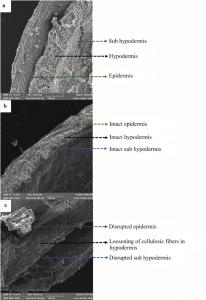
A New Discovery in Extraction Technology of HEMP Fiber
Exploring Hemp Seed Hull Biomass for an Integrated C-5 Biorefinery: Xylose and Activated Carbon
NANJING, CHINA, April 16, 2024 /EINPresswire.com/ -- Hemp containing 𝛿-tetrahydrocannabinol below legal limits (< 0.3%) commonly referred as industrial hemp is an annual cash crop gaining attention in the United States and European countries. Earlier studies in this lab on seed hulls has showed its potential as substrate for C-5 biorefinery due to its low lignin and high hemicellulose content. It can effectively reduce costs. A typical C5 biorefinery focuses on extraction of xylose by hydrolyzing biomass using dilute acids and converting xylose to xylitol and other chemical precursors. The remaining xylose stripped biomass can be converted to other value-added products such as activated carbon (AC). Successful portable energy storage systems such as Li-ion batteries require renewable, sustainable and low-cost electrode material and high surface area AC’s can meet this demand.For a C-5 biomass biorefinery process, the choice of acid and the hydrolysis conditions is an important factor. Commonly preferred acid for dilute acid hydrolysis is sulphuric acid (SA). However, SA pre-treatment/hydrolysis requires downstream processing in the form of acid neutralization which is expensive and leads to generation of sulphate wastes.
Jagannadh Satyavolu’s Team find that it can effectively solve such problems by using methane sulphonic acid (MSA) to replace SA. Moreover, they discuss the production of xylose and AC from hemp seed hull with methane sulphonic acid (MSA) hydrolysis. And dilute acid hydrolysis of hemp seed hull with MSA is 31% higher yields when compared to traditional dilute acid hydrolysis with sulphuric acid (SA) at the same acid loading rate. In addition, the result shows that AC produced from MSA hydrolyzed and KOH activated hemp seed hull delivered an order of magnitude higher surface area when compared to SA hydrolyzed and KOH activated AC. The MSA is found to have delignification properties and therefore removal of hemicellulose along with lignin leads to formation of pure cellulose structures and this property has a great positive impact on high surface area AC formation.
DOI
https://doi.org/10.1016/j.jobab.2024.01.002
Original Source URL
https://www.sciencedirect.com/science/article/pii/S2369969824000136
Journal of Bioresources and Bioproducts
Nanjing Forestry University
email us here
EIN Presswire does not exercise editorial control over third-party content provided, uploaded, published, or distributed by users of EIN Presswire. We are a distributor, not a publisher, of 3rd party content. Such content may contain the views, opinions, statements, offers, and other material of the respective users, suppliers, participants, or authors.


